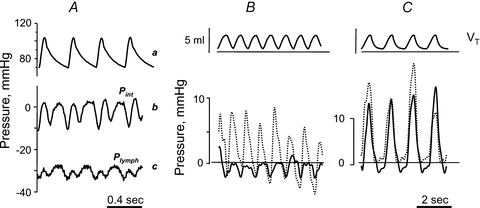Figure 4. Effect of cardiac and respiratory activity on interstitial (Pint) and lymphatic (Plymph) fluid pressure.

A, cardiogenic oscillations of diaphragmatic interstitial (b, Pint) and intraluminar lymphatic pressure (c, Plymph), measured through the micropuncture technique in anaesthetized rats under neuromuscular blockade. Both diaphragmatic Pint and Plymph oscillate almost in phase with arterial systemic pressure (a), shifting from a minimum to a maximum value during cardiogenic oscillations (modified from Negrini et al. 2004). B and C, simultaneous recording of respiratory tidal volume (VT, top panel), lymphatic (Plymph; continuous lines) and interstitial (Pint; dashed lines) pressures obtained in intercostal lymphatics of supine anaesthetized rats during spontaneous breathing (B) or mechanical ventilation at similar VT and at zero alveolar end-expiratory pressure (C) (modified from Moriondo et al. 2005).
